Guitar World Verdict
Both instruments have got what it takes in spades – the looks, the sound, the playability. And you can’t ask for much more than that.
Pros
- +
Superb looks and convincingly vintage feel.
- +
The E20OOSS/v will handle any number of styles.
- +
E20SS/v is a beast of an instrument.
- +
... And it has just about everything you need in a punchy, toneful dread.
Cons
- -
Under-saddle pickups being ruled out might deter some.
- -
The relicing might not suit everyone.
You can trust Guitar World
Eastman has a long-standing reputation for high-quality guitars – both electric and acoustic – that nod towards established big-name designs. But at the same time, the company isn’t afraid to make a bold move here and there and come up with a model that is totally its own.
Take our recent looks at the Romeo semi-acoustic models, for instance: an excellent mix ’n’ match of the familiar with some flourishes that are all Eastman’s own. And, let it be said, we’ve been nothing short of delighted by every one of this company’s guitars we’ve looked at in recent years.
This particular team of China-based luthiers seems to have a knack for actually improving on history, quietly righting so-called wrongs or just filling in the gaps from the big league’s blueprints.
This is very much the driving force behind the two acoustic guitars we have before us today. Reminiscent, perhaps, of guitars from Gibson’s pre-war catalogue and with enough subtle relicing onboard to accentuate the vintage chic, this pair might start off on familiar turf, but they soon take off on a unique journey.
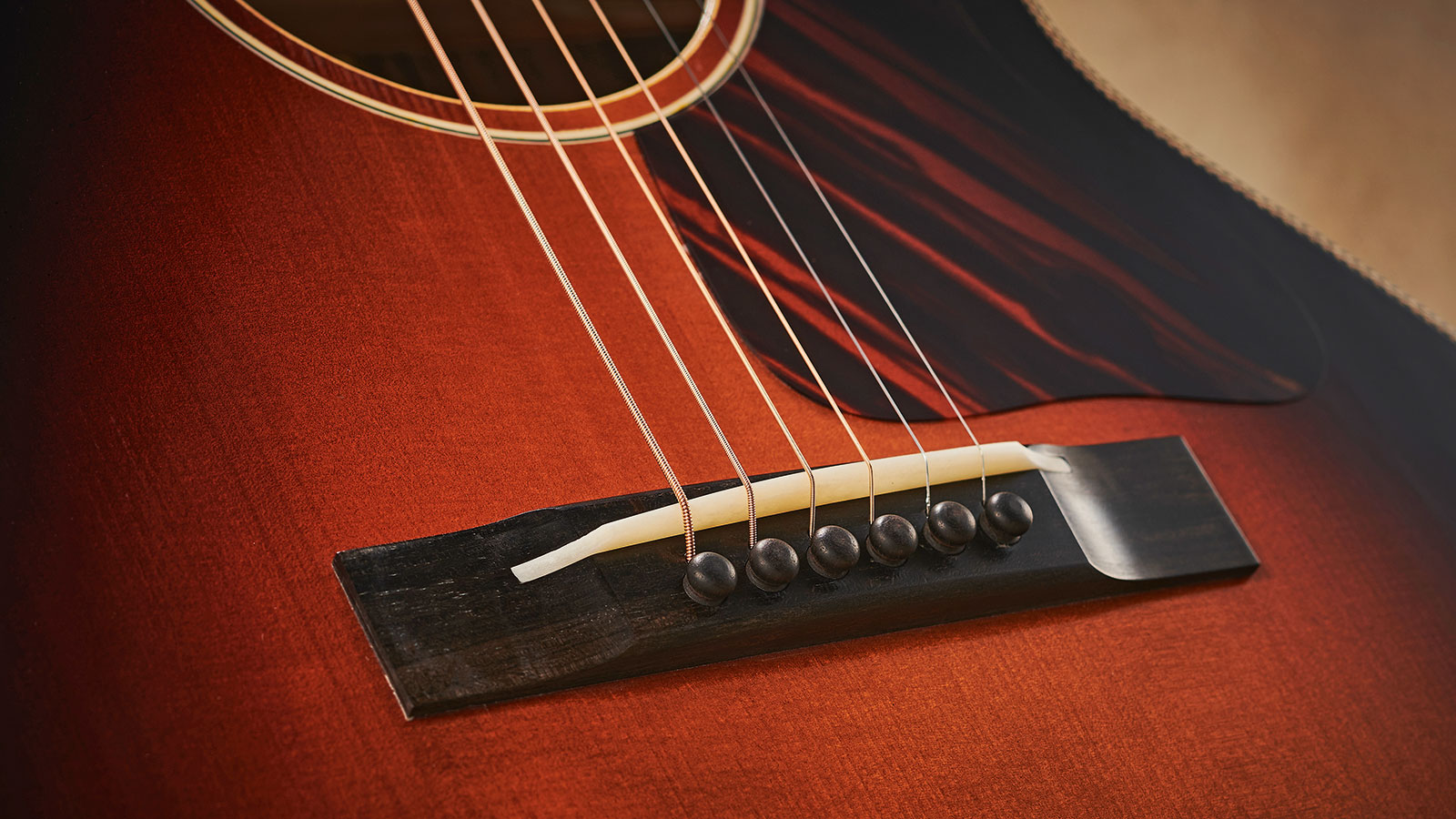
One interesting development since we last looked at Eastman’s acoustic range in these pages is a collaboration with boutique USA builder Dana Bourgeois – the fruits of which will see the light of day at this year’s Summer NAMM show.
Dana has been building outstanding instruments for many years and has brought some of his own design innovations and voicing techniques to the Eastman table. It’s causing a ripple through the Eastman catalogue as these changes begin to take effect – and from what we’re hearing ourselves here, it all adds up to be good news for acoustic players worldwide.
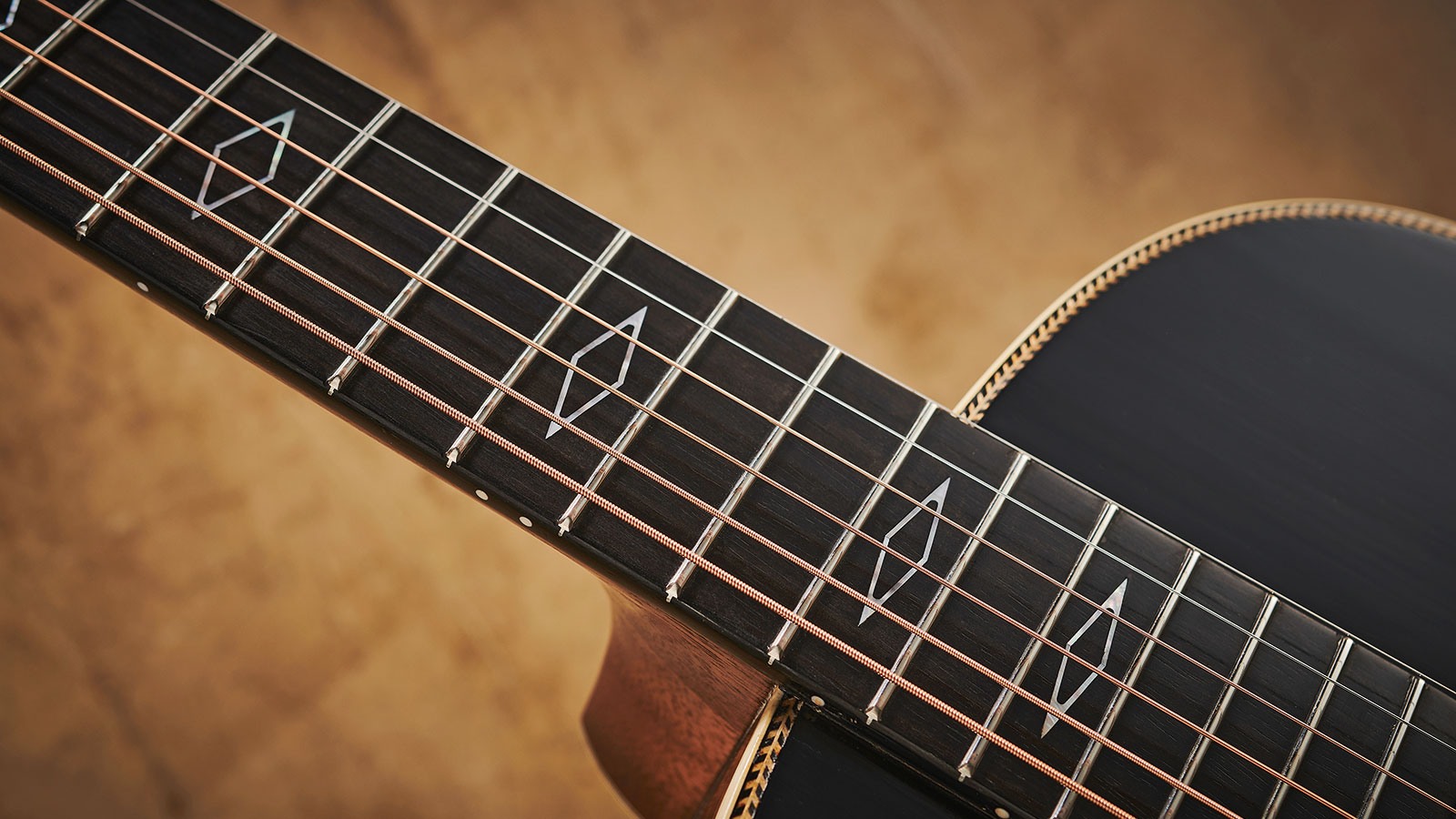
Looking at these two models, it’s easy to see from where the basic design has been drawn. The slope-shouldered dread E20SS/v pays homage to Gibson’s workhorse J-45 and its little brother bears the DNA of the equally celebrated Gibson L-00. But neither are quite what they seem at first glance.
Eastman decided to mix things up a little in the workshop and take a few attributes from other acoustic deities to produce something that was a little different, while retaining the obvious family resemblance.
Adirondack was pretty much a staple for pre-war acoustic guitars and the instruments that featured it are held in high regard among the acoustic cognoscenti
The two models we have on review are new – albeit delayed (thanks to the pandemic), since the initial announcement of their imminent arrival was made roughly two years ago.
But Eastman has had similar models in its stable for some time: the E20SS is very similar but lacks the antique violin finish and light relicing, and the E10SS is again similar but with the more historically correct mahogany back and sides and Sitka spruce top, as opposed to the rosewood/Adirondack combo we find here.
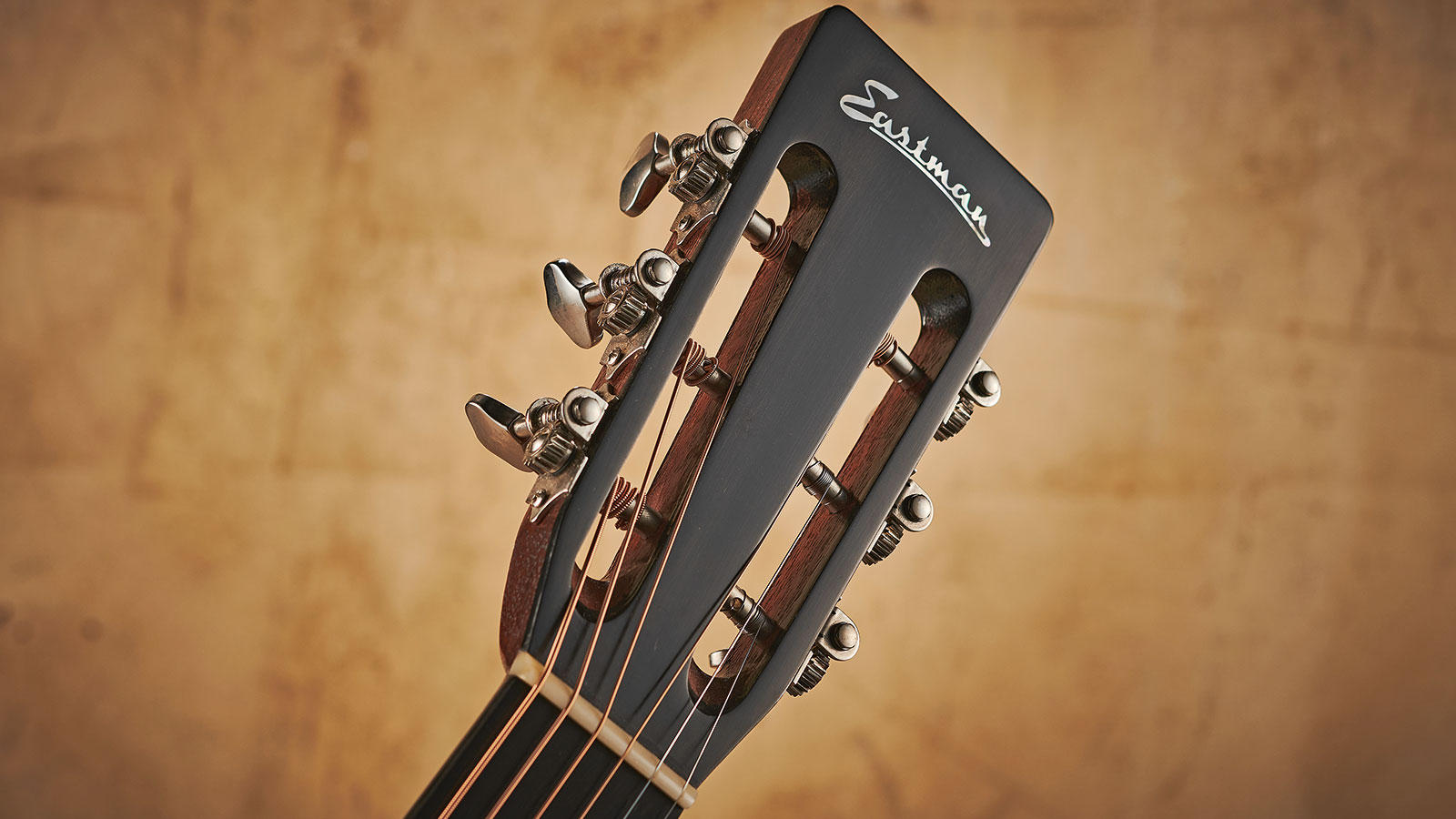
The eagle-eyed among you might have noticed the herringbone trim around the E20SS/v’s top, too. A Martin attribute on a Gibson design? Whatever next? Well, there’s plenty more besides.
While we’re on the subject of basic construction with these two instruments, we might as well cover the rest of the build detail. Both the E20 and the E20OO share much of the same kit of parts. As we’ve said, the back and sides are rosewood in both instances and Adirondack is the choice for the top wood.
This is interesting because, historically speaking, Adirondack was pretty much a staple for pre-war acoustic guitars and the instruments that featured it are held in high regard among the acoustic cognoscenti.
Why? Well, Adirondack can be thought of as being the bar-room brawler of the spruce family; its cousins, Sitka and Engelmann spruce, for instance, being more refined and genteel, comparatively speaking.
You really could imagine that both these instruments are 60 or more years old
The Tonewood Data Source notes that Adirondack is famed for its “higher ceiling for volume”, adding that “the payoff is the ability to drive an Adirondack top hard and hear it get louder and louder without losing clarity”.
Brutish by nature, perhaps, but it has a softer, more sentimental side as its dynamic range really is spectacular – from gentle fingerpicking to full-on bluegrass abandon, it’s your faithful companion.
Necks on both guitars are mahogany with ebony fingerboards, and those distinctive fretboard markers provide an off-ramp from the established lineage; the slotted headstock on the E20OO is another homespun gesture on Eastman’s part.
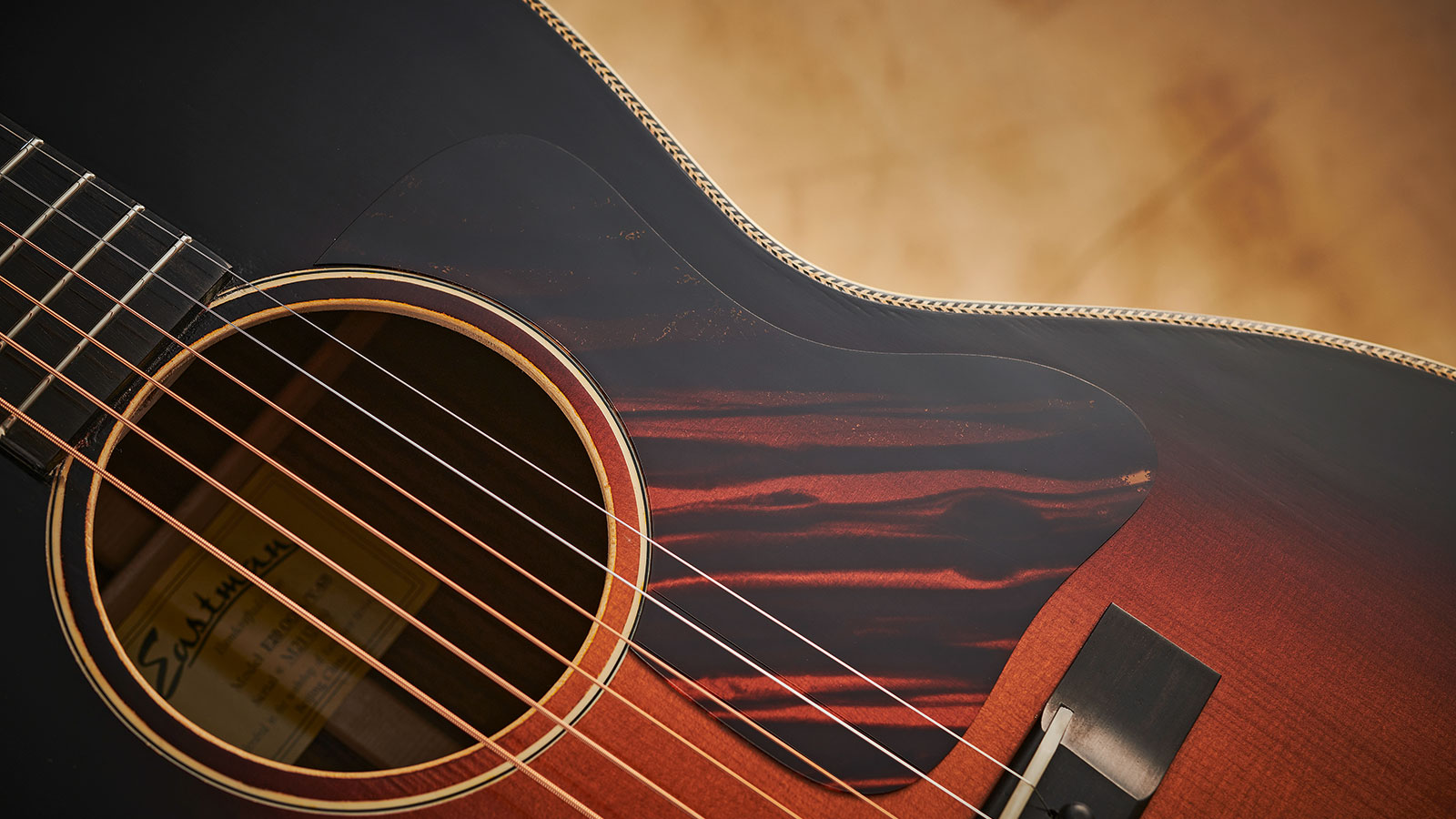
The finish to both is Eastman’s own antique violin variety and Pepijn’t Hart, the company’s product development manager, tells us that this particular finish allows the wood to breathe even more than nitrocellulose:
“There’s nothing between the player and the woods of the guitar,” he says. “You’re hearing the sound of the body woods with nothing in between.”
The light relicing that accompanies the varnish is tastefully done, too. You really could imagine that both these instruments are 60 or more years old. It’s an intriguing formula, for sure, but how do these ‘old’ youngsters actually sound?
Feel & Sounds
One thing we noticed straight away in both instances is how light these guitars are. Being in the somewhat privileged position of having handled some precious older acoustics in our time, this is another characteristic of vintage pieces. Guitars take many years to fully dry out and we’re told that they can become around 17 per cent lighter in the process.
Pepijn tells us that while the guitars’ timber has not been subject to torrefaction as such, they have undergone heat treatment to dry out the woods. It certainly works; the illusion that you’re handling an older instrument is bolstered in this respect.
The thin finish means that the wood grain is visible and when you pick up either guitar, it becomes a tactile experience
The antique finish is another factor here. Far from being overdone with finish checking, faux wear, pick scrapes and so on, everything here is very subtle. It’s as if the guitars have enjoyed some time on the road but have been cared for at the same time. The thin finish means that the wood grain is visible and when you pick up either guitar, it becomes a tactile experience. It feels worn and not factory fresh.
So far, so good. The neck feels good in the hand – chunky without a hint of being clubby or unmanageable. We played our first chord on the E20OO and the glorious roar of that Adirondack came straight back to us. Despite its smaller body, from the start, it’s possible to tell there’s enough dynamic range here to satisfy the demands of many different styles of music.
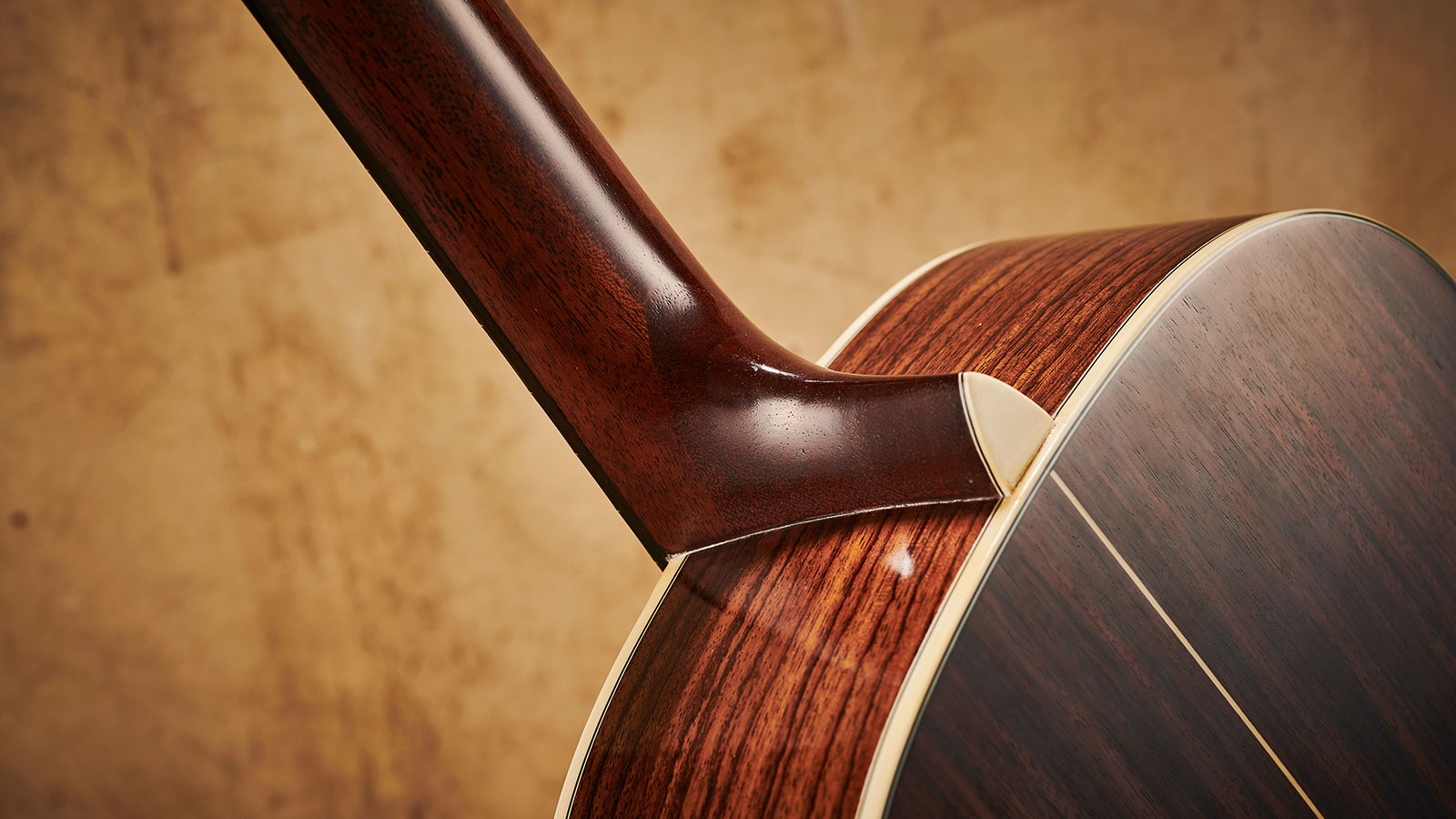
The L-00 has an association with the blues, of course, and the Eastman delivers heaps of Delta mojo like a true pro. The rosewood back and sides were an inspiration on Eastman’s behalf, too, as they add a helping of bass response where it counts while the trebles sing loud, sweet and clear.
The rosewood’s characteristic slight midrange scoop doesn’t detract from the broad tonal picture, either. In fact, it’s a very good foil to the growling presence of the Adirondack in every respect.
The E20SS/v is the real eye-opener. If we thought its little brother packed a punch volume-wise, then the dread really is something outstanding
If we were being overly critical, we’d say that the design of the E20OO’s saddle means that if you wanted to add a pickup, then you’d be restricted to one from either the magnetic soundhole variety or some sort of inside-body sensor. An under-saddle piezo would be out of the question, but we suspect that wouldn’t be a dealbreaker for the average blueser.
Of the two guitars on review, the E20SS/v is the real eye-opener. If we thought its little brother packed a punch volume- wise, then the dread really is something outstanding. It roars – but in a good way.
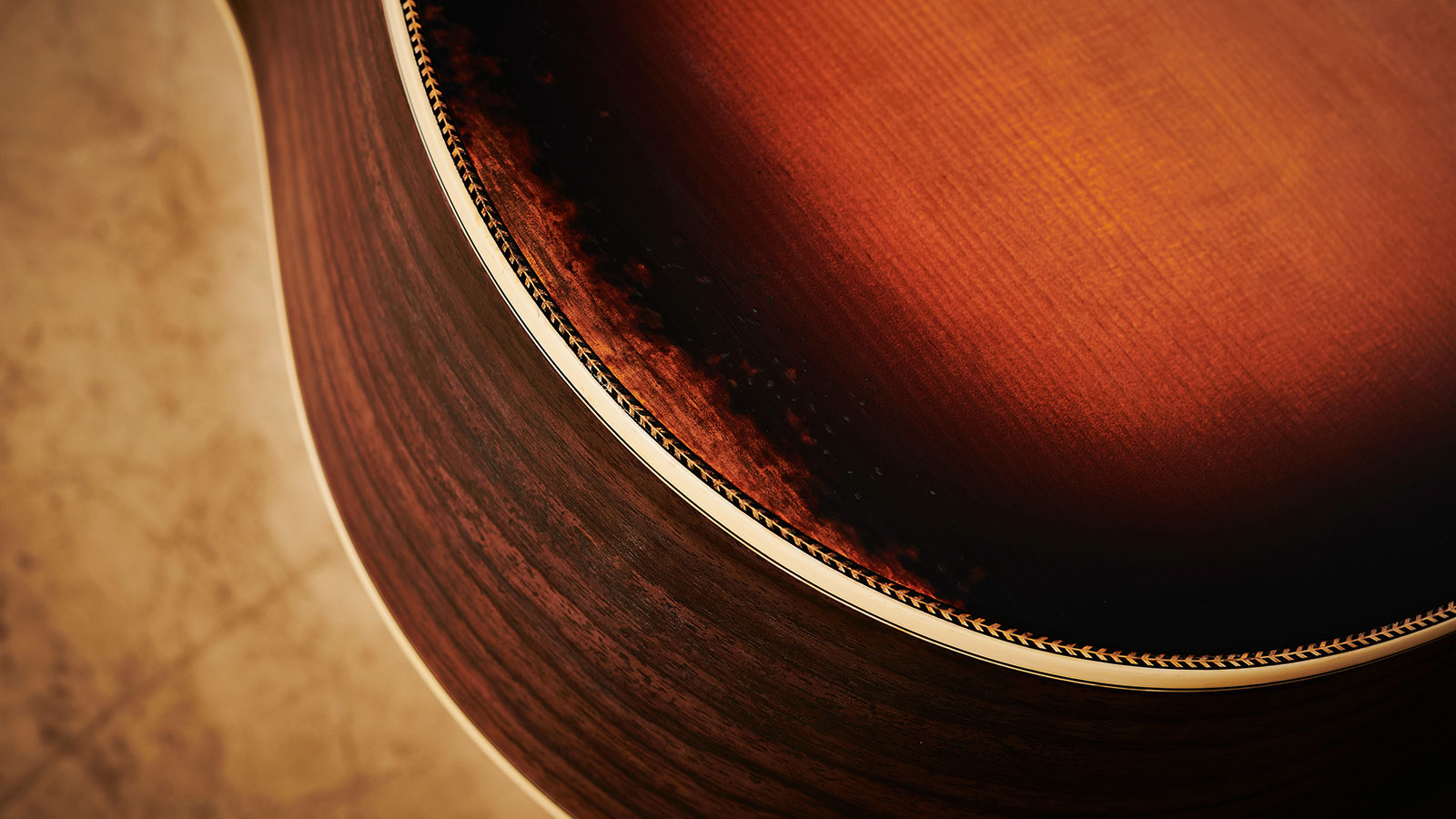
In fact, everything we already liked about the E20OO is accentuated here. The dreadnought body shape is practically a perfect fit for the Adirondack/rosewood combo as it seems that everything we threw at it, it batted back to us.
Sometimes a guitar will suggest a musical style when you pick it up and the first tune we were inspired to play was a fairly dodgy version of Led Zep’s Babe I’m Gonna Leave You, which was originally played on a Gibson J-200 that Jimmy Page borrowed from Mickie Most.
You can imagine the sort of tonal area we found ourselves in: dry, throaty, woody and earthy. So the quiet fingerpicking – along with that dynamic ‘flamenco moment’ in that particular song – receives a tick in the box. It was totally at home with some hearty blues and our brave attempt at bluegrass plectrum work, too.
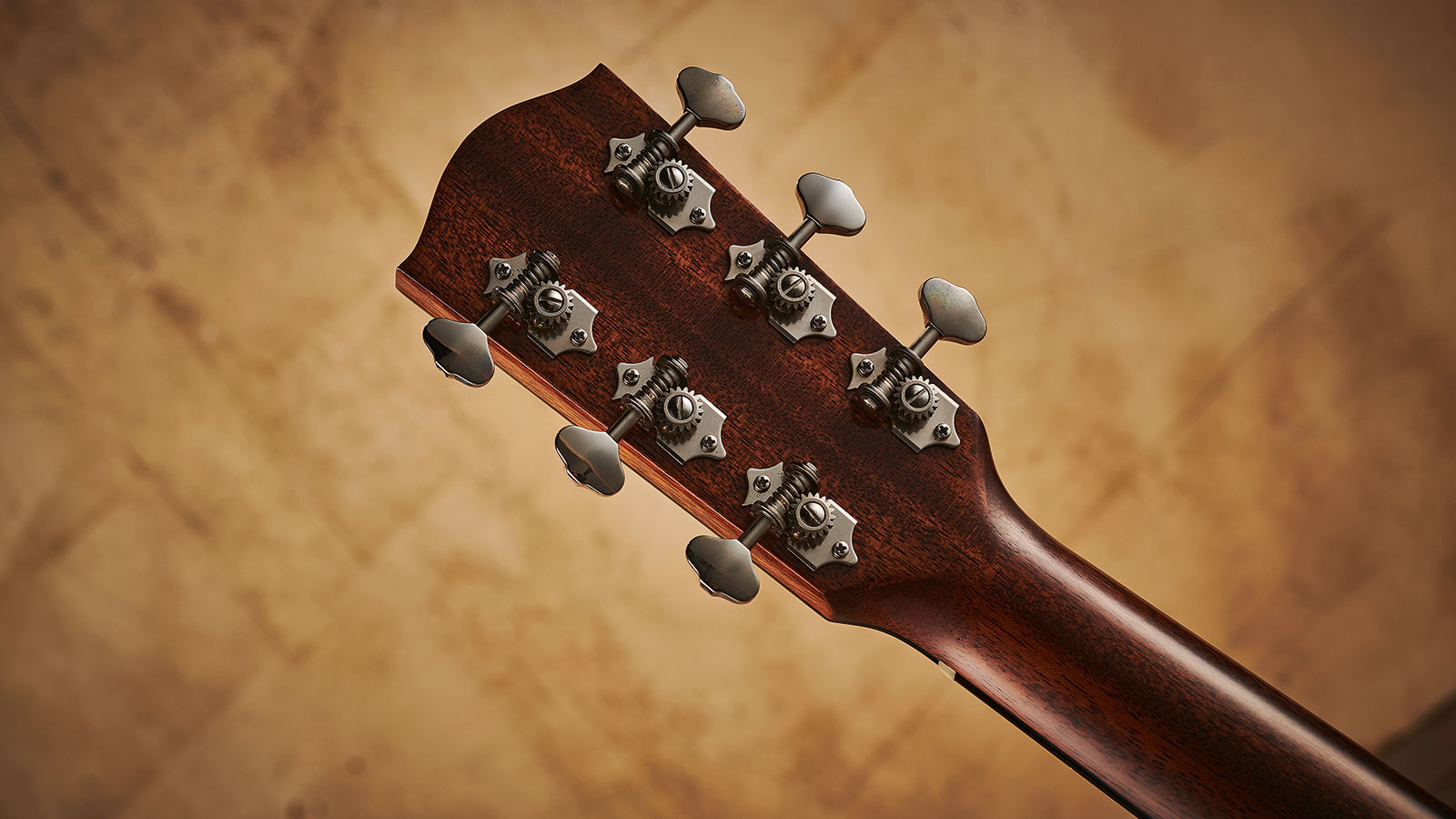
Verdict
As you can probably tell, we’re seriously impressed by this brace of Eastmans. To be able to produce this kind of quality – and tone – at this price point is to be applauded and the China-based factory deserves considerable praise, too.
The combination of body timbers and that thin violin finish brings out the very best in both of these guitars, and we’d be proud to walk into any open-mic session or gig with either at our side.
If we have to pick a favorite then it’s the E20SS/v for its ability to go between a throaty roar and demure fingerstyle at the turn of a hat.
E20OOSS/V specs
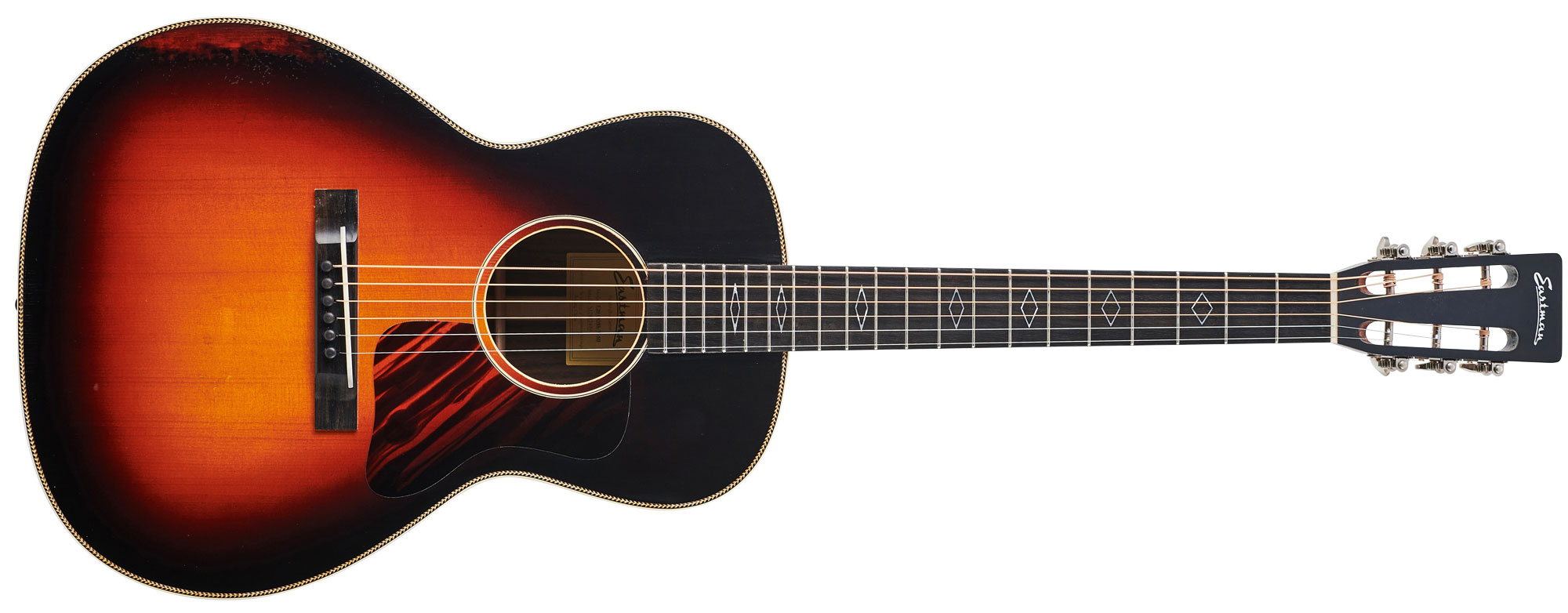
- PRICE: $1,869 / £1,949 (inc case)
- ORIGIN: China
- TYPE: 00 Size
- TOP: Adirondack spruce
- BACK/SIDES: Rosewood
- MAX RIM DEPTH: 101mm
- MAX BODY WIDTH: 375mm
- NECK: Mahogany
- SCALE LENGTH: 628mm (24.75”)
- TUNERS: Open-gear PingWell V93N
- NUT/WIDTH: Bone/43mm
- FINGERBOARD: Ebony
- FRETS: 20 Jescar-FW43080
- BRIDGE/SPACING: Ebony/55mm
- WEIGHT (kg/lb): 1.81/4
- OPTIONS: None
- LEFT-HANDERS: No
- FINISH: Antique violin
E20SS/V specs

- PRICE: $1,869 / £1,949 (inc case)
- ORIGIN: China
- TYPE: Dreadnought
- TOP: Adirondack spruce
- BACK/SIDES: Rosewood
- MAX RIM DEPTH: 114mm
- MAX BODY WIDTH: 406mm
- NECK: Mahogany
- SCALE LENGTH: 628mm (24.75”)
- TUNERS: Open-gear PingWell V93N
- NUT/WIDTH: Bone/43mm
- FINGERBOARD: Ebony
- FRETS: 20 Jescar-FW43080
- BRIDGE/SPACING: Ebony/55mm
- WEIGHT (kg/lb): 1.99/4.4
- OPTIONS: None
- LEFT-HANDERS: No
- FINISH: Antique violin
- CONTACT: Eastman Guitars
With over 30 years’ experience writing for guitar magazines, including at one time occupying the role of editor for Guitarist and Guitar Techniques, David is also the best-selling author of a number of guitar books for Sanctuary Publishing, Music Sales, Mel Bay and Hal Leonard. As a player he has performed with blues sax legend Dick Heckstall-Smith, played rock ’n’ roll in Marty Wilde’s band, duetted with Martin Taylor and taken part in charity gigs backing Gary Moore, Bernie Marsden and Robbie McIntosh, among others. An avid composer of acoustic guitar instrumentals, he has released two acclaimed albums, Nocturnal and Arboretum.
“While the odd corner has clearly been cut, these are true Gibsons with all the individuality that this brand exhibits”: Gibson J-45 Special and Hummingbird Special review
“Fender has stripped back the price – but has it gone too far paring back the sounds, too?” Fender Standard Acoustasonic Telecaster review












